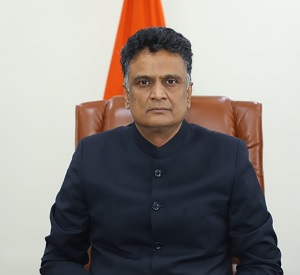About KSC
The XVIIIth INTOSAI Congress held in Budapest in 2004 adopted a strategic plan for the period 2005-2010 with a vision to ” Promote good governance by enabling SAIs to help their respective governments improve performance, enhance transparency, ensure accountability, maintain credibility, fight corruption, promote public trust, and foster the efficient and effective receipt and use of public resources for the benefit of their peoples “. The Strategic Plan includes the setting up of four strategic Goals. Goal 3 underscores the importance of knowledge sharing to continuous improvement with regard to Goal 3, which consists of number of Working Groups/Task forces, this Plan did not envision the need for a new Committee with an overarching responsibility for Goal 3.

Purpose
The Strategic Plan of INTOSAI 2017-22 described that Goal-3 Knowledge Sharing and Knowledge Services is to encourage SAI cooperation, collaboration, and continuous improvement through knowledge development, knowledge services including:- Producing and revising INTOSAI products
- Providing benchmarks and operating a community portal;and
- Conducting best practice studies and performing research on issues of mutual interest and concern.


Mr. K Sanjay Murthy
Shri K Sanjay Murthy assumed office as the Comptroller and Auditor General of India on 21st November 2024.
Shri K Sanjay Murthy, an experienced Indian Administrative Service (IAS) officer from the Himachal Pradesh cadre of the 1989 batch, assumed the prestigious role of Comptroller and Auditor General (CAG) of India on November 21, 2024. This appointment marks a significant milestone in his distinguished career in public service.
Early Life and Education
Born in Andhra Pradesh, Shri K Sanjay Murthy pursued his undergraduate studies in Mechanical Engineering. His academic foundation, combined with his unwavering dedication, laid the groundwork for a successful career in public administration.
A Career Dedicated to Public Service
Before his appointment as CAG, Shri K Sanjay Murthy served as the Secretary of Education, a position he held from October 1, 2021, to November 20, 2024. In this role, he played a pivotal role in shaping the nation’s education policies and initiatives.
Main committee
The Main Committee is the KSC’s superior body. It is based on an open membership that constitutes a pool of resources to carry out existing and future tasks undertaken by the Working Groups and Task Forces. The main committee will have one meeting every third year in conjunction with INCOSAI.
The Main committee of KSC consist of members and observers. The observers of KSC Main Committee are:
- INTOSAI General Secretariat
- INTOSAI Journal for Government Auditing
KSC committee members

Steering committee
The Steering Committee takes on the coordination role, evaluates whether the KSC tasks are consistent with the INTOSAIs objectives. One meeting is expected every year. Important activities of the Working Groups and Task Forces will be presented to the Steering Committee with a view to coordination towards achieving the Goal objectives. The Steering Committee is composed of:
Observers
The INTOSAI General Secretariat, INTOSAI Development Initiative (IDI), INTOSAI Journal of Government Auditing (IJGA) and Forum for INTOSAI Professional Pronouncements (FIPP) will participate as observers.
Partners
Academic and Research Institutions with which KSC has established cooperation agreement and INTOSAI Regions are the partners of the KSC Steering Committee.
